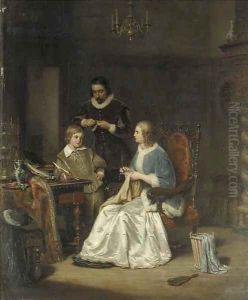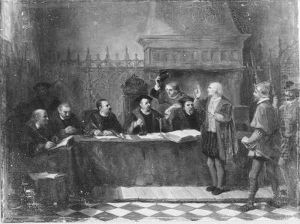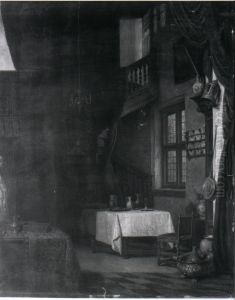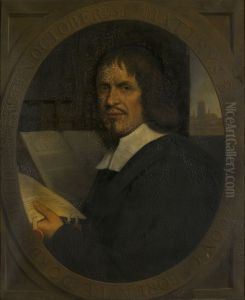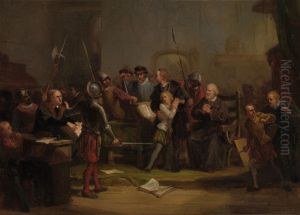David Van Der Kellen Paintings
David van der Kellen III was a Dutch medallist, coin engraver, and director of 's Rijks Munt (the Dutch Mint), born in 1827 in Utrecht, Netherlands. He was part of a well-established family of artists and engravers; his father, David van der Kellen II, was also a renowned engraver, which provided the younger van der Kellen with an environment rich in artistic tradition and technical skill from an early age. This familial background paved the way for his future career in numismatics and medal art.
Van der Kellen's education and early career were deeply influenced by his father's profession and his own growing interest in numismatics. He studied engraving and medal making under his father's guidance, quickly mastering the techniques and developing a style characterized by meticulous attention to detail and a classical approach to design. His talents were recognized early on, leading to a career that would see him contribute significantly to the field of medal art in the Netherlands.
In 1879, David van der Kellen was appointed as the director of 's Rijks Munt, the Dutch Royal Mint, a position he held until his retirement. His tenure at the Mint was marked by innovation in coin design and minting techniques, reflecting his commitment to both artistic excellence and technical precision. He was responsible for overseeing the production of Dutch currency, as well as designing a number of commemorative medals that are highly regarded for their craftsmanship and aesthetic appeal.
Beyond his professional achievements, Van der Kellen played an active role in the artistic and numismatic communities of the Netherlands. He was a member of various societies and associations related to the arts and sciences, contributing his knowledge and expertise to the advancement of numismatics as both a form of artistic expression and a scientific discipline.
David van der Kellen III passed away in 1895, leaving behind a legacy as one of the Netherlands' most distinguished medallists and coin engravers. His work continues to be celebrated for its beauty, precision, and contribution to the Dutch numismatic tradition.
